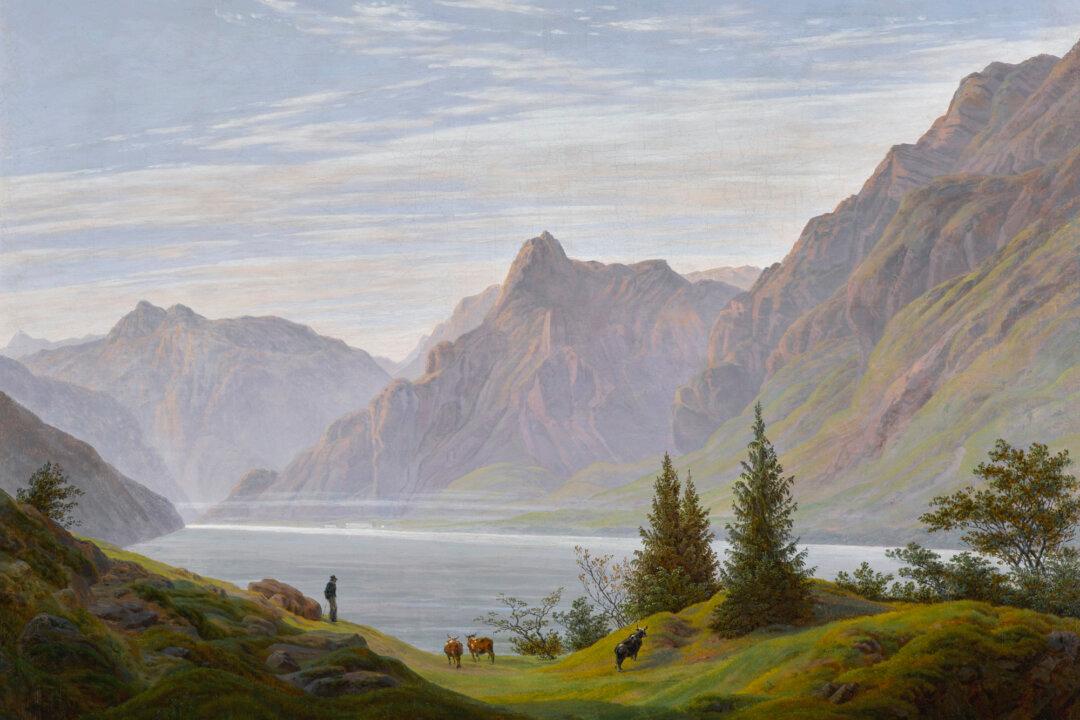In the summer of 1797, Samuel Taylor Coleridge had several friends visit, among whom were poet William Wordsworth, his sister Dorothy Wordsworth, and essayist Charles Lamb. The group was looking forward to enjoying pleasant rambles through the countryside during their stay.
Unfortunately, towards the beginning of the sojourn, Coleridge met with a rather unhappy accident: His wife, Sara, accidentally spilled boiling milk on his foot, incapacitating him for the duration of the visit. His friends went out one evening for the much-anticipated nature walk, leaving a disgruntled Coleridge alone at home.

So Begins This Poem of Woe
The initial bent of the poem, “This Lime-Tree Bower My Prison,” is predictably morose. He focuses on what he’s missing, viewing nature through the eyes of his friends in his imagination. Tracing their path in his mind’s eye, he views “The roaring dell, o'erwooded, narrow, deep/ And only speckled by the mid-day sun.” So keenly does he picture the scene that the reader easily forgets that the speaker is in the lime-tree bower at all. Coleridge continues:There my friends Behold the dark green file of long lank weeds, That all at once (a most fantastic sight!) Still nod and drip beneath the dripping edge Of the blue clay-stone.
Of course, the speaker doesn’t really see the fantastic sight at all. He speaks instead to the power of his imagination and memory and scarcely sees what’s right in front of him, much less the features of the distant dell.The word “perhaps” as he describes the sight of a ship on the sea indicates that the poem is meditative. The speaker can only speculate on the sights his friends are seeing. Yet, the beauty he imagines them to behold transforms his own interior disposition. Through his imagination, the speaker not only beholds what his friends see, but feels with his friends, participating in their gladness and sharing in the emotions of their experiences. Speculation turns to affirmation as he insists on the vision of the ships “whose sails light us/ The slip of smooth clear blue betwixt two Isles/ Of purple shadow! Yes!”

Not only is the union between the speaker and his friends solidified, but it in turn strengthens the connection between the experience of Coleridge’s imagined landscape and the scene Lamb beholds in reality.
The reader also gains a glimpse into the closeness of the friendship between Coleridge and Lamb specifically and is able to note Lamb’s merits, particularly his sensitivity to nature. Lamb’s gentle-heartedness inspires the speaker to open-heartedness, turning his thoughts from imprisonment to liberation.
Contemplating Lamb’s release from “the great City pent,” the poet too enjoys a release from his downcast state as he participates in his friend’s gladness. So freed is the speaker from his former misery that without jealousy or bitterness, he exhorts nature to put on as beautiful a display as possible for his friend: “Shine in the slant beams of the sinking orb/ Ye purple heath-flowers! richlier burn, ye clouds/ Live in the yellow light, ye distant groves!”
The contrasting states of the poet and his friend come more prominently into play as the poem progresses: The speaker who has enjoyed the same scenes of nature in the past is presently imprisoned in the lime-tree bower, but his friend moves from the oppressive atmosphere of the city into the open fields in the countryside. The tension between past and present is seen in these lines, which also reveal that memory and past experience fuel the speaker’s imaginings: “My friend/ Struck with deep joy may stand, as I have stood,/Silent with swimming sense.”

Returning to the Bower
In the final section of the poem, the poet moves from the macro world beyond the bower to the micro world which he occupies in reality. His contemplation has freed his sight to now recognize beauty in the lime-tree bower as well. He notes the play between light and shadow on the leaves as evening approaches.Henceforth I shall know That Nature ne'er deserts the wise and pure; No plot so narrow, be but Nature there, No waste so vacant, but may well employ Each faculty of sense, and keep the heart Awake to Love and Beauty!
In fact, the poem closes with an experience both the speaker and his friend share. Both see the rook as it flies across the sky. This final image of the bird resolves the poem’s numerous tensions.“Bower and wider landscape, city and countryside, past and present are all in play. The contrasts are finally fused in the flight of a bird which—seen and heard by Coleridge and Lamb in different places and at slightly different times—unites with its creeking flight, its single vision, the two men in a shared symbolic experience. The disparate elements in the poem are fused by the bird.”

A spiritual peace permeates the end of the poem as though nature and the poet sing vespers. Nature’s music blends with the poet’s benediction of the rook (“Homewards, I blest it!”), finally closing in a praise of creation (“No sound is dissonant which tells of Life”).
Though not physically keeping pace with his friends, Coleridge metaphorically strides from a despondent frame of mind to a grateful and uplifted heart. In sympathy with his friend, Coleridge too assumes the epithet of “gentle-hearted.” Lamb’s joys become his own joys; Lamb’s experience is so much the poet’s own that Coleridge is as glad as though he were there, walking the same paths.

While initially in the poem it is difficult to disentangle disappointment and delight, the poet’s mourning is turned to rejoicing by the end. The humble lime-tree bower is transfigured, enlarged by the imaginative sympathy shared between the poet and his friend and glorified by the poet’s new perception through senses now fully attuned and awake to the world’s beauty.







